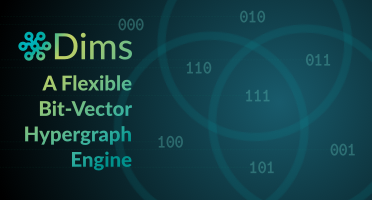
photrek
Project OwnerOwner
DEEP Connects Bold Ideas to Real World Change and build a better future together.
Coming Soon
Photrek will develop a system, based on a handful of semantic primitives, to define algebraic specifications from the binary level up, and to connect them together in a rich distributed typed hypergraph. By focusing on specifying and iterating upon the design of digital systems in general, this project aims to not only funnel data into AIs for symbolic reasoning, but also give users, AI or otherwise, autonomy and flexible control over how they work with data. Both data and approaches to working with it, should be embedded together in the shared space of connected knowledge graphs. Good ideas can propagate through the ecosystem, only enforcing constraints in contexts where participants agree.
This RFP seeks the development of advanced tools and techniques for interfacing with, refining, and evaluating knowledge graphs that support reasoning in AGI systems. Projects may target any part of the graph lifecycle — from extraction to refinement to benchmarking — and should optionally support symbolic reasoning within the OpenCog Hyperon framework, including compatibility with the MeTTa language and MORK knowledge graph. Bids are expected to range from $10,000 - $200,000.
The first milestone will involve prototyping and development of the core formal specification of Dims. The aim is to develop minimal constraints that produce the desired properties presented above. During this stage we will also explore strategies for integrating Dims with MeTTa to enhance the abilities of both. MeTTa could be one of the languages used to describe compliance to the constraints of a context in Dims and Dims could be used to give MeTTa access to rich information about people’s work and codebases. We will also assess MORK for high-speed hypergraph processing and compatibility with Hyperon’s cognitive framework and develop a plan for its integration in scenarios where it makes sense.
- A minimal prototype that highlights our design goals and provides insight into our strategy moving forward. - An initial specification document for Dims that covers its core semantics in technical detail ready for peer review. - An integration strategy for MORK and MeTTa.
$12,000 USD
- The prototype demonstrates the usefulness of Dims for at lease a few use cases. - The specification makes it clear to developers how they could write their own implementation of Dims. - Our plans for integration with Hyperon/MORK/MeTTa is acceptable to all parties involved.
We will extend the prototype from Milestone 1 to fully conform with our specification along with some useful integrations for the initial intended workflows like pulling multiple codebases into a knowledge graph with richly connected documentation. We will also work on compatibility layer with MORK and MeTTa so that Hyperon’s capabilities improve Dims and vice versa.
- Fully functional Dims engine with semantic overlays and rule-based validation. - Initial integration with MORK and MeTTa for symbolic processing over hypergraphs from Dims. - Demonstration of Dims’ ability to improve development processes by importing multiple Git repositories into one knowledge graph and allowing substructures to be shared between them.
$24,000 USD
- We can demonstrate the use of Dims in multiple unique workflows, where it enforces beneficial constraints properly at the boundaries between rule-sets in the hypergraph. - MeTTa successfully consumes data from Dims, and vice versa. - Dims can host its own codebase, as well as others like those of MORK and MeTTa.
This milestone focuses on polishing the system for public release through extensive testing and creating good documentation. We also want to ensure satisfactory performance make the deployment process easy and integrate well with Hyperon for AGI development.
- Full release including code APIs and deployment instructions under a permissive open source license or public domain. - Comprehensive developer documentation tutorials and usage guides. - Final performance report covering scalability security trade-offs and how well Dims improves beneficial interactions between AI systems and humans. - Demonstration workflows integrating Dims with MeTTa and MORK for dynamic knowledge synthesis and reasoning.
$24,000 USD
- Dims improves how humans interact with rich knowledge graphs, while giving them control over how much AI systems influence their work-flows. - Dims demonstrably improves semantic integrity, scalability, and compositional reasoning over tools in the space. - All code and documentation published, reproducible, and accessible to the SingularityNET community. - Feedback from internal Hyperon contributors confirms production-readiness and architectural compliance for AI use cases.
Reviews & Ratings
Please create account or login to write a review and rate.
Check back later by refreshing the page.
© 2025 Deep Funding
Join the Discussion (0)
Please create account or login to post comments.